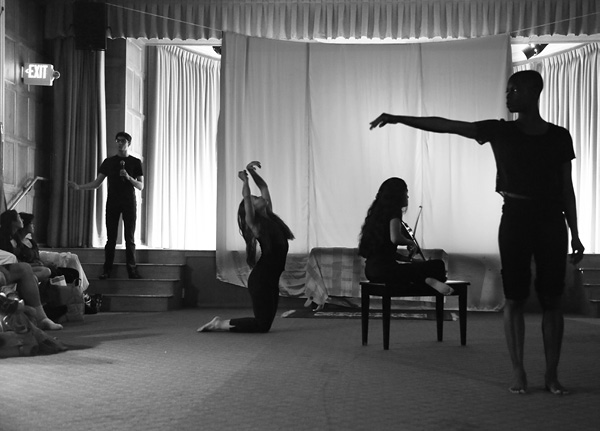
ALMOST...HOME...
first performed on May 18, 2014
Roble Hall Theater, Stanford, CA
performed three times in 2014
SUKANYA CHAKRABARTI / VINITH MISRA / ANDREA HALE / KUNAL SANGANI / SRUTI SARATHY / YVETTE DICKSON-TETTEH
Myrton Wesley Running Wolf, So-Rim Lee, Michael Vang, Anneka Kumli, Linda Hess
Palo Alto, CA
609791284s609791284u609791284k609791284a609791284n609791284y609791284a609791284c609791284@609791284s609791284t609791284a609791284n609791284f609791284o609791284r609791284d609791284.609791284e609791284d609791284u
ALMOST...HOME...
SUKANYA CHAKRABARTI / VINITH MISRA / ANDREA HALE / KUNAL SANGANI / SRUTI SARATHY / YVETTE DICKSON-TETTEH
A musician sits in the middle of a room and plays Carnatic classical music on her violin. There are seating arrangements on either side of the room—curtains, pillows, rugs and sofas make the room look like the drawing room of a house. Audience members walk in and take their places as my voice narrates stories about the Partition of Bengal, the formation of Bangladesh and of grandmother remembering the violence of such a divorce, with families separated and friends lost.
There is no formal division or marked border between the spectators and the performers in this piece. We are all witnessing the (his)tories of our ‘homes’ together, our liveness intermittently interrupted by some faces and voices on the screen—a white curtain that flows down from the ceiling of the room. At one point, two of the performers take us through a tour of their imagined homes.
Through the recreation of memories as performance, a musician, a dancer, a movement artist and a spoken-word artist explore how our bodies remind us of our homes and the ways that home gets mapped onto bodies. “Almost…home…” explores ideas of home (or homelessness) articulated by different bodies across races, ages, genders, professions and communities.
The conversations are generated through the recreation of memories by people we interviewed prior to the performance. The idea of travel is juxtaposed against the idea of rest, and thus, this performance reiterates, reaffirms and rearticulates the definitions of ‘rest,’ ‘travel,’ ‘body,’ ‘memory’ and ‘home.’ In having the theme define the format, the entire performance exists in a type of ‘flow’ or perpetual travel-state, one story intermingling with another through reminiscence and shared consciousness. The audience is invited to participate in a ritual-like chant. The performers reiterate ‘I come from…’ going round and round a circle, while the audience members, who join in, fill in the gaps.
How are people forming ideas of home when cultures and races are always in flux, in a mix and in travel? What does home mean to people with mixed heritage, multiple identities and jobs that entail travel and migration?